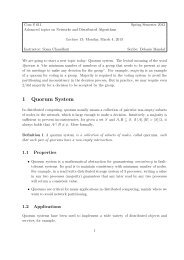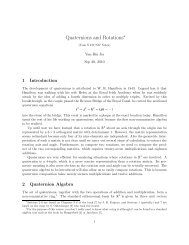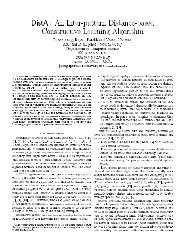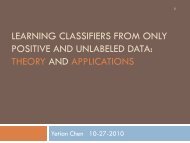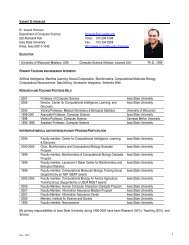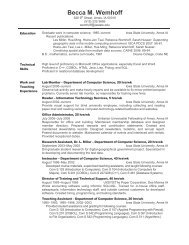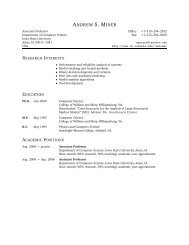Introduction
Introduction
Introduction
You also want an ePaper? Increase the reach of your titles
YUMPU automatically turns print PDFs into web optimized ePapers that Google loves.
2 PROGRAMMING LANGUAGE<br />
Definition 2.1 A programming language is a language that is capable of expressing all computations.<br />
For example, Scheme and C++ are programming languages.<br />
Exercise 2.1<br />
What are other programming languages?<br />
Definition 2.2 A general-purpose langauge is one that is not tailored to some particular application area.<br />
Examples: AspectJ, Eos, Ruby, Python, Java, Ada, PL/I, BASIC, COBOL, Pascal, Ptolemy, SNOBOL,<br />
Icon, Algol W, Algol 60, Algol 68, C, Haskall, Edison, ... (literally thousands)<br />
But the techniques we’ll study aren’t just limited to general-purpose programming langauges.<br />
Definition 2.3 A special-purpose language is a language that is designed to support some particular application.<br />
These don’t have to be able to compute all computable functions.<br />
Examples: Lotus 1-2-3 macros, the MFC class library, MUMPS, JavaScript, VBA, Cold Fusion<br />
Exercise 2.2<br />
What are other formal languages?<br />
Formal languages are also used in a variety of settings: music, knitting, mathematics, engineering, ...<br />
3 THE COURSE IN A NUTSHELL<br />
• The journey to the mountain:<br />
– functional programming techniques<br />
• The mountain climb:<br />
– using functional techniques to write interpreters<br />
• Our equipment:<br />
– Scheme, a Lisp dialect<br />
• Our guides:<br />
– the textbook authors<br />
4 Com S 342 ESSENTIAL OBJECTIVES<br />
You should be able to:<br />
1. Write and modify programs in functional style<br />
2. Make effective use of data abstraction<br />
2



